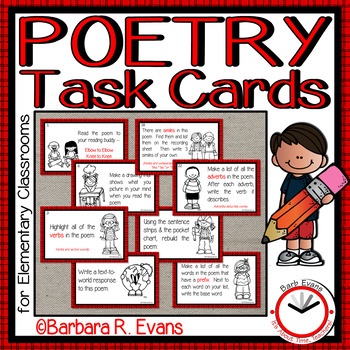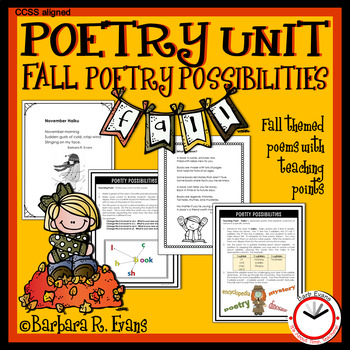It's
about time, teachers, to explore more possibilities for using
poetry in the classroom. Today's focus is GRAMMAR.
One of the chief reasons I like to
use poetry for grammar lessons is that the subject of the
lesson is usually quite obvious in the poem. For example, the
following poem practically begs you to teach PUNCTUATION.
How many punctuation marks you
focus on depends entirely on the age and learning stage of your students.
You can see how easy it is to focus on a particular punctuation mark in this
poem. If you are lucky enough to have a smart board, this becomes an
interactive lesson. If, like me, you do not have that resource, you can
copy the poem on chart paper and let the students interact with that
copy. Your grammar lesson can be as simple as identifying the
punctuation marks, reviewing the role of these marks, or more in-depth instruction about the correct use
of less common punctuation such as dashes and semi-colons.
A focus on punctuation in poetry
also provides a wonderful opportunity to teach your students to “read
the punctuation.” Modeling
the expression that punctuation invokes is an invaluable aid to teaching fluent
reading. In fact, reading poetry is the #1 way to improve fluency!
When you model reading the punctuation, overemphasize the changes in pace,
voice, breath, etc. By teaching your students to "read the
punctuation," you will be enhancing comprehension, too!
Poetry can also be used to study
PARTS OF SPEECH. The following poem is one I like to use when
studying verbs. It has a nice variety of
action words and I love to point out the verbs the poet chose to use in place
of some “tired” ones.
A bonus with this poem is the
extensive use of personification. While you may not think a lesson on personification is appropriate for 1st graders, in order to truly
understand the poem, your students will need to realize that the “I” in the
poem is the March wind. Obviously, for older students, personification is
an appropriate lesson and is beautifully illustrated in this poem.
Virtually every poem has a grammar
lesson hiding in it, just waiting to jump out at you. All that’s required
is to start looking at poems differently. Try using fresh eyes to
identify possible grammar lessons in this poem:
How did you do? Here some
teaching points I found:
1. The importance
of using capital letters for months of the year; how hard would it be to
understand this poem if it didn’t have a capital M on the name of
the month?
2. Homonyms could be studied, starting
with merry/marry/Mary and/or I/eye/aye.
3. The vowel digraph /ay/ is plentiful in this
poem. You may want to make an anchor chart for this
digraph. Extend the learning by including other digraphs for the
long a sound.
4. Review punctuation and “reading the
punctuation.” The hyphen may be new to your
students. This is a perfect vehicle for studying it.
5. Identify parts of speech: nouns,
verbs, pronouns, adjectives…
Check back soon for more ideas about using poetry in the classroom.
You can find more possibilities for
teaching with poetry in --









No comments:
Post a Comment